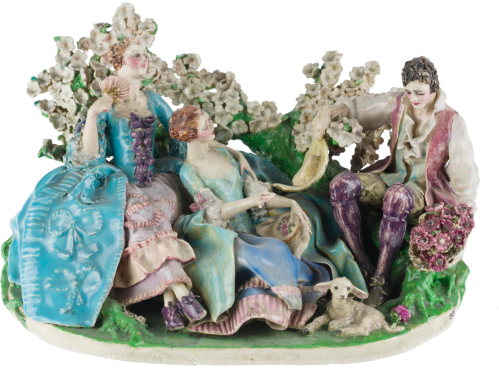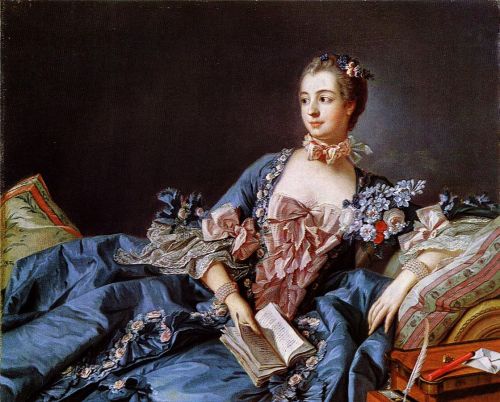MARSHALL COLMAN – Ceramic artist.
 Gwendolen Parnell, The Pompadour (National Museums Scotland)
Gwendolen Parnell, The Pompadour (National Museums Scotland) As well as the revival of figurative ceramics by manufacturers like Doulton and Meissen in the early 20th-century, there was a revival among the studio potters. In England the most high-profile of these was Gwendolen Parnell, who was also the most invested in Rococo. Of her figures in Georgian dress, the most famous was her series based on The Beggar’s Opera, which had a phenomenally successful three-year run in London in the 1920s. The show inspired other modellers too. This Georgianism in ceramics was an interesting pendant to the wider Georgian revival that found in the architecture and furniture of the period an anticipation of modernist values of simplicity and reserve. But of course, its aesthetics were very different.
Some of Parnell’s figures were a pastiche of 18th-century Chelsea porcelain, replete with bocage and scrolled bases. The most outstanding, in my judgement, was the figure group called The Pompadour, which is in National Museums Scotland.
 François Boucher, Madame de Pompadour (National Gallery Scotland)
François Boucher, Madame de Pompadour (National Gallery Scotland) It has two ladies and a gentleman on a rustic seat with a lamb at their feet. The young man is in attractive déshabillé; one lady holds a fan, the other a tambour frame. Its affinity to Rococo shepherdesses is obvious. The title refers to the period and the pinks and purples, but it’s also bound to recall Boucher’s portraits. Parnell’s ladies, however, aren’t shown to have the serious intellectual interests that Boucher depicted – his Pompadour often has a book in her hands.